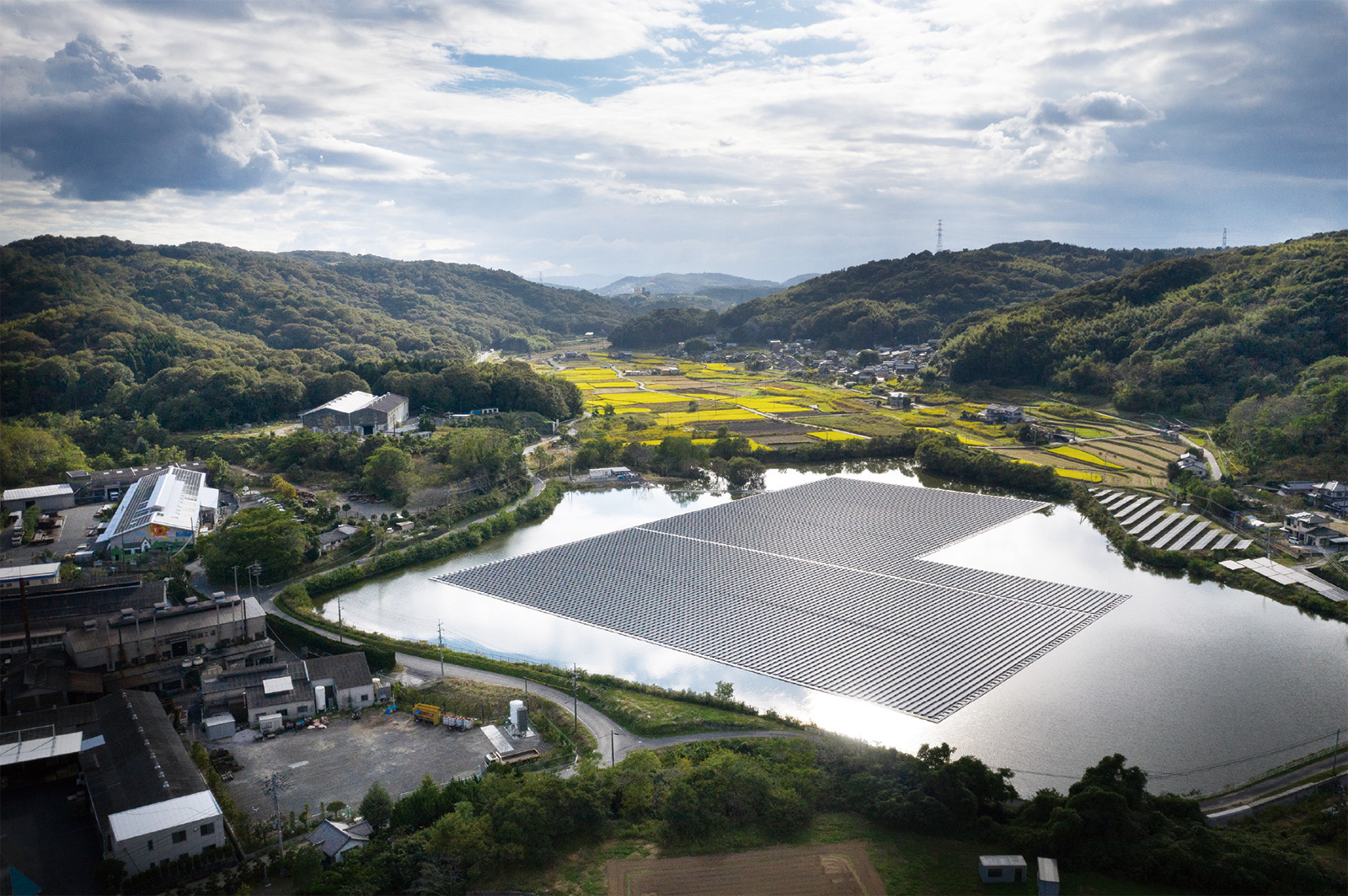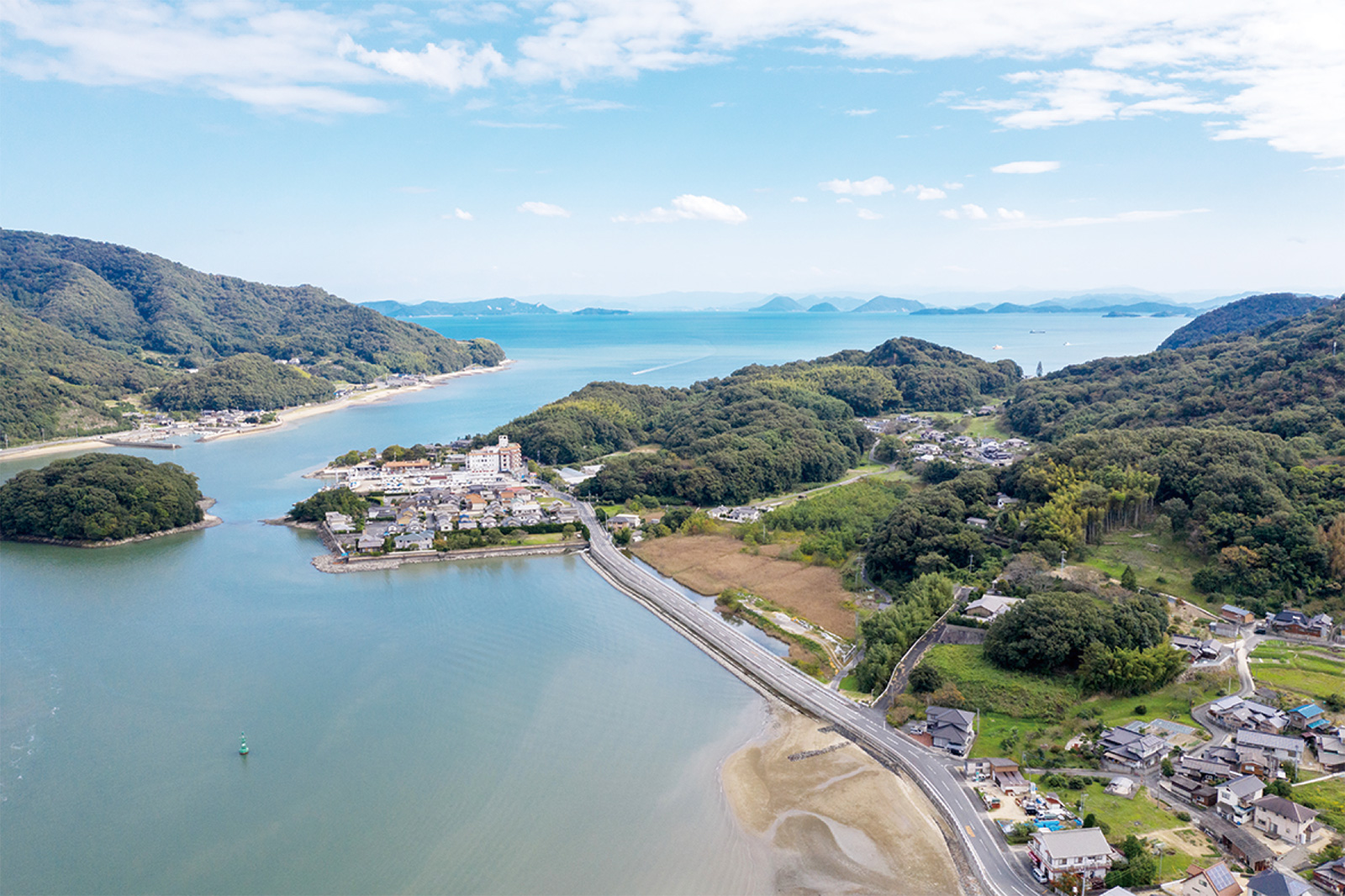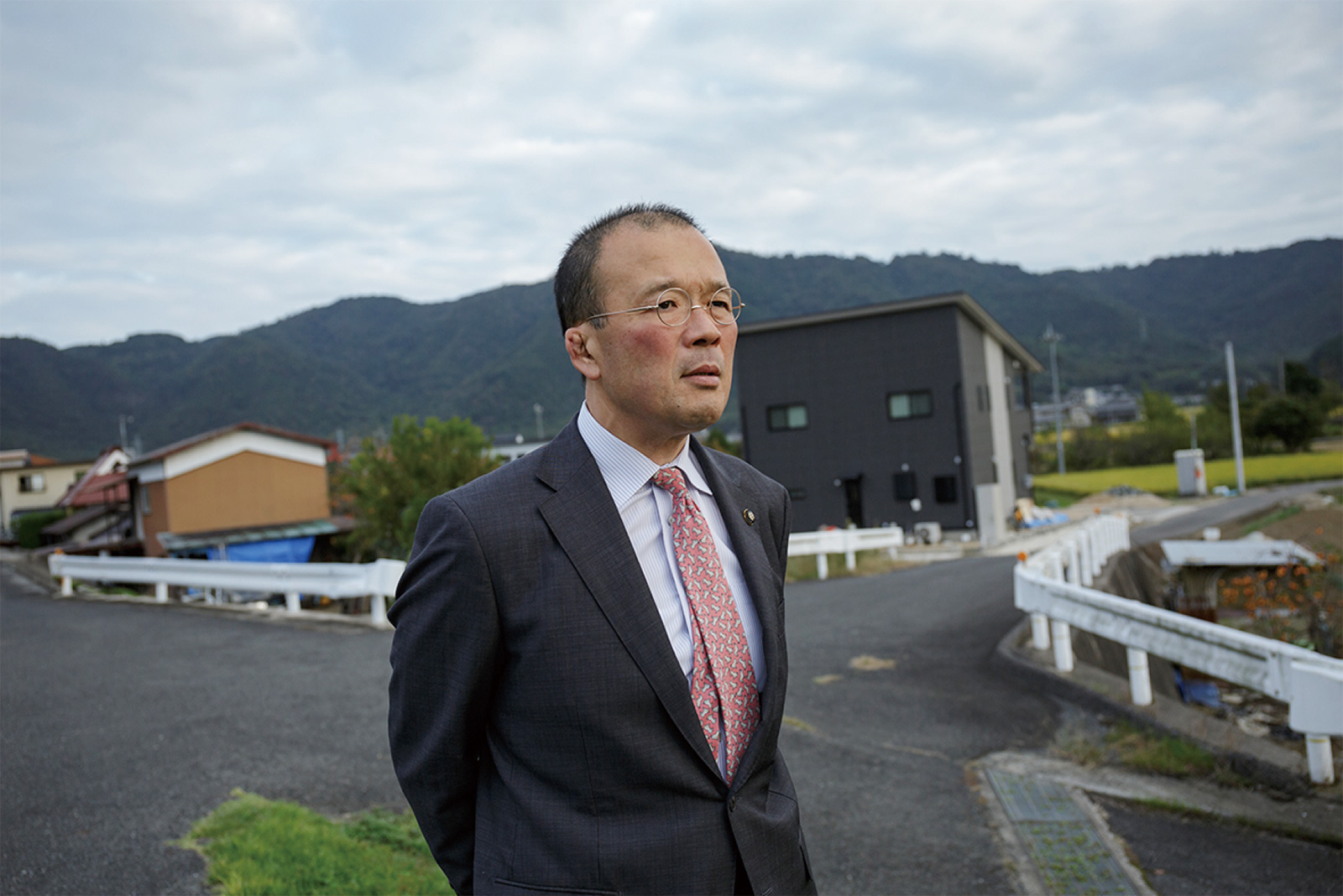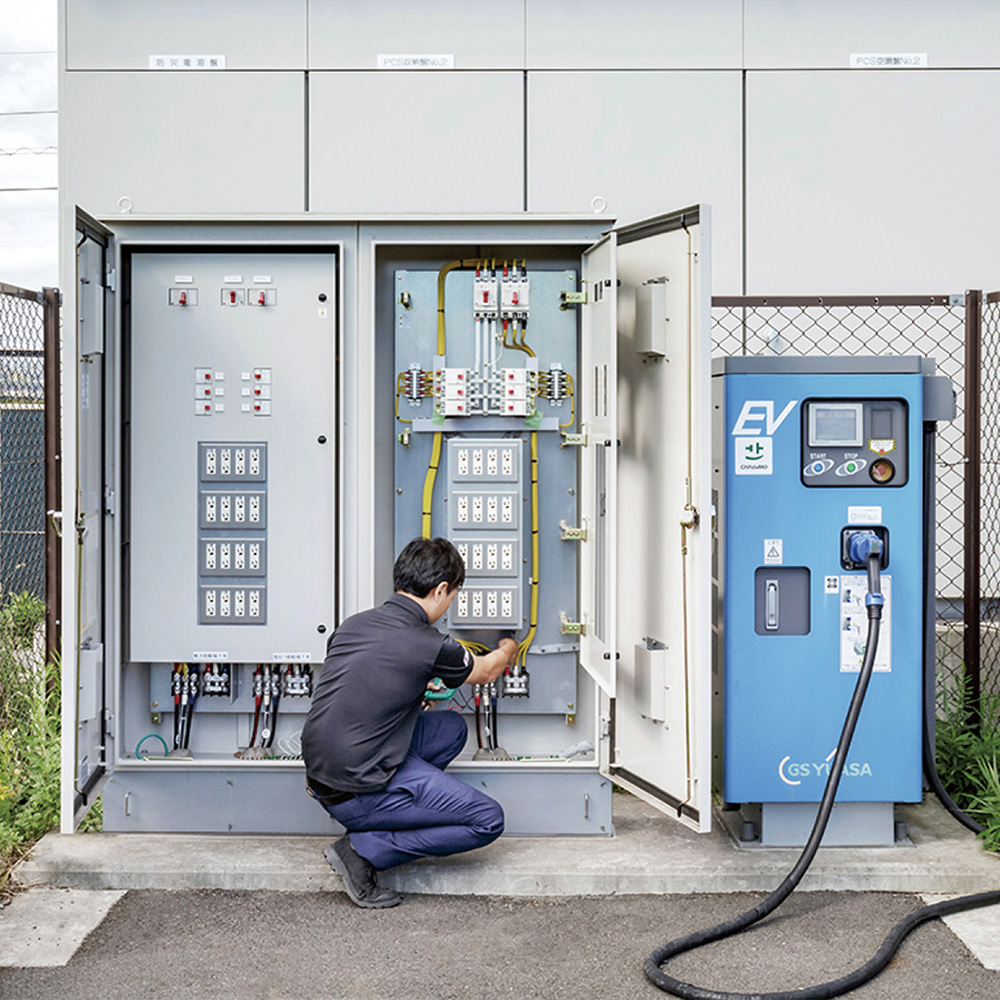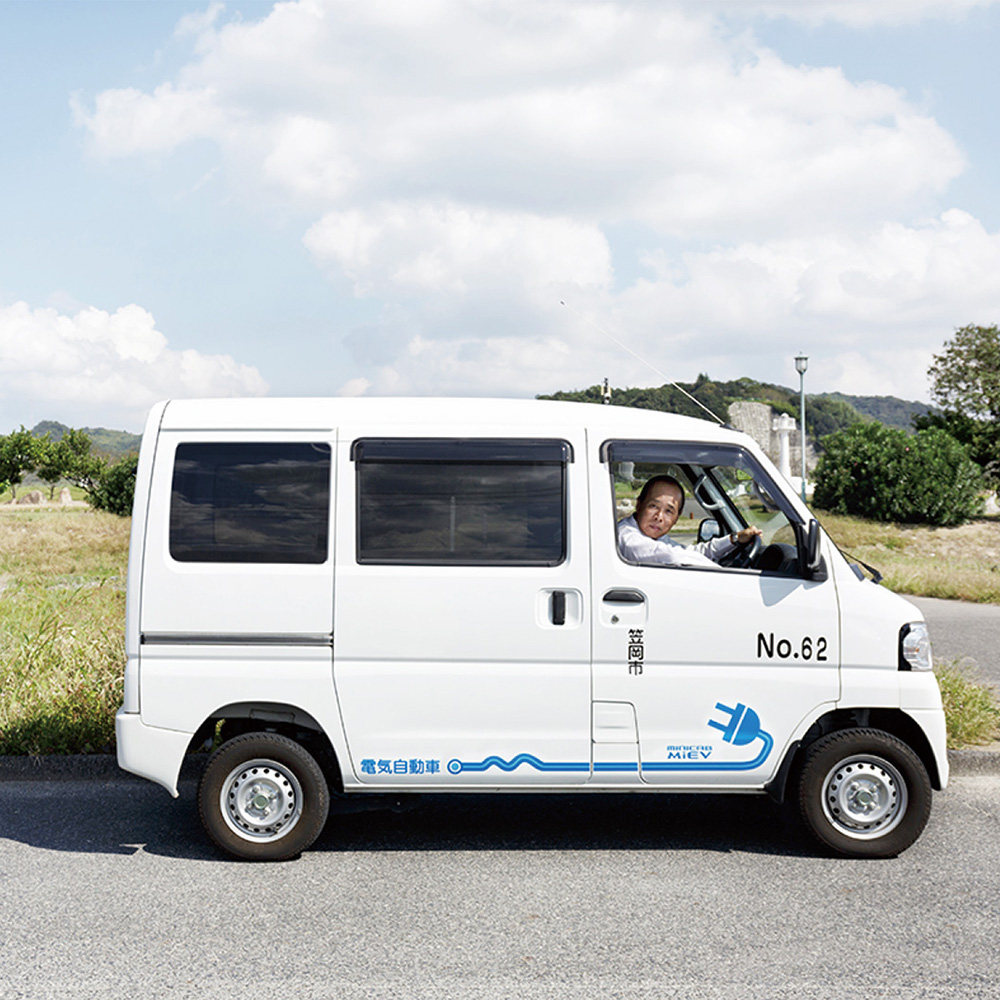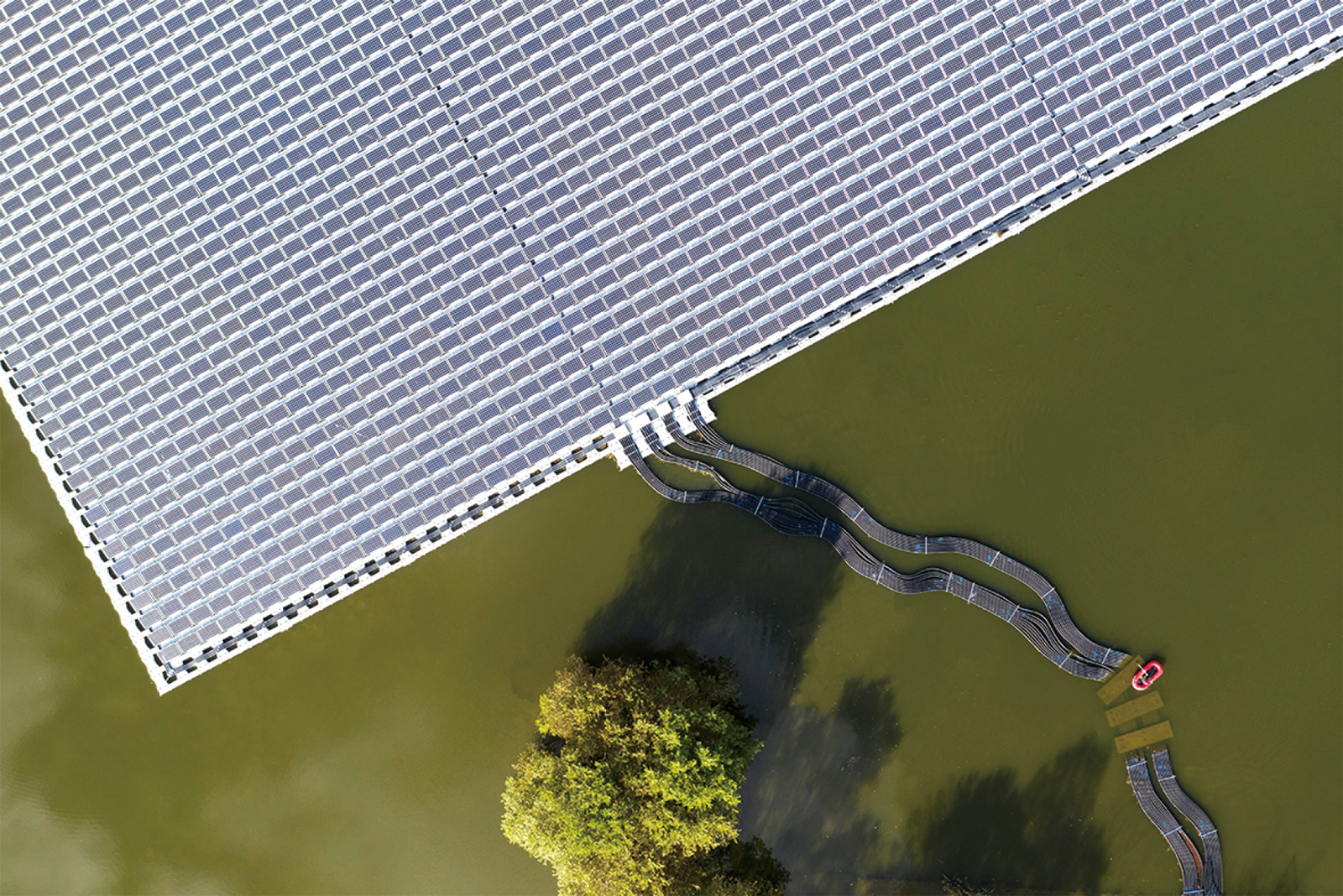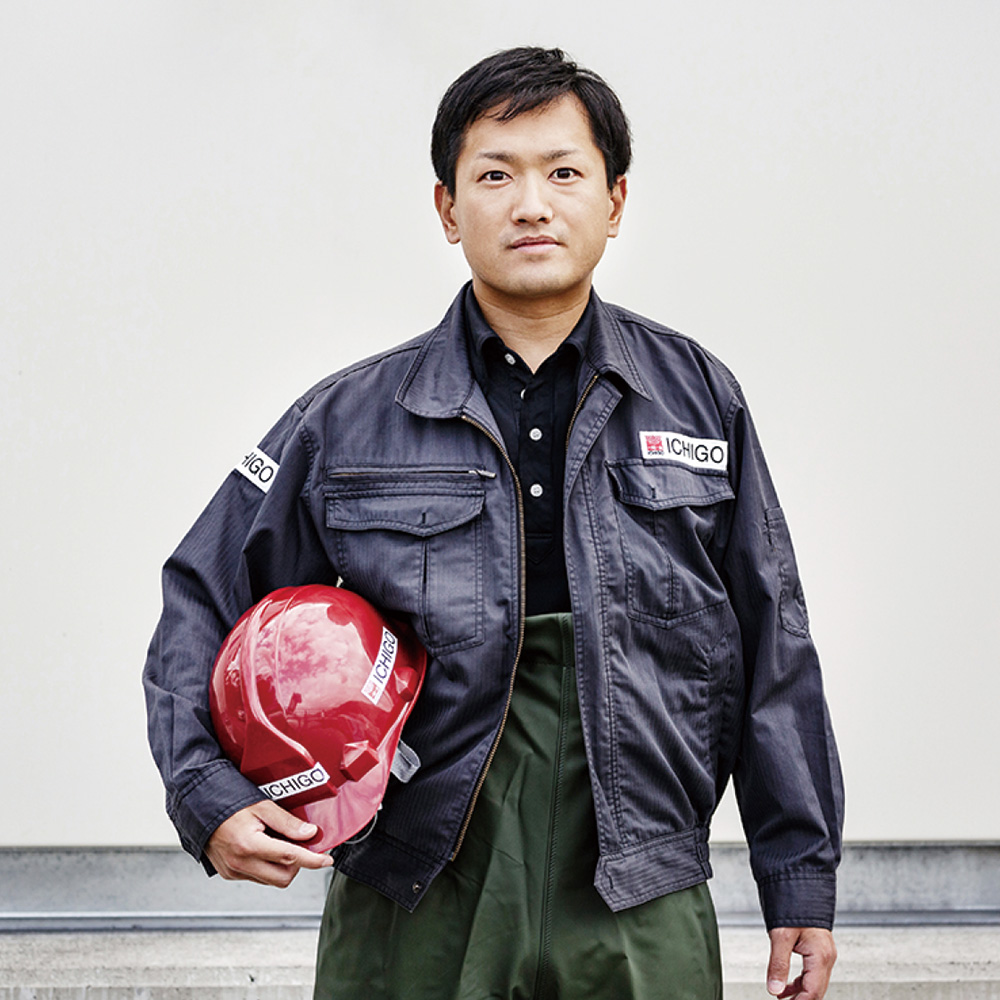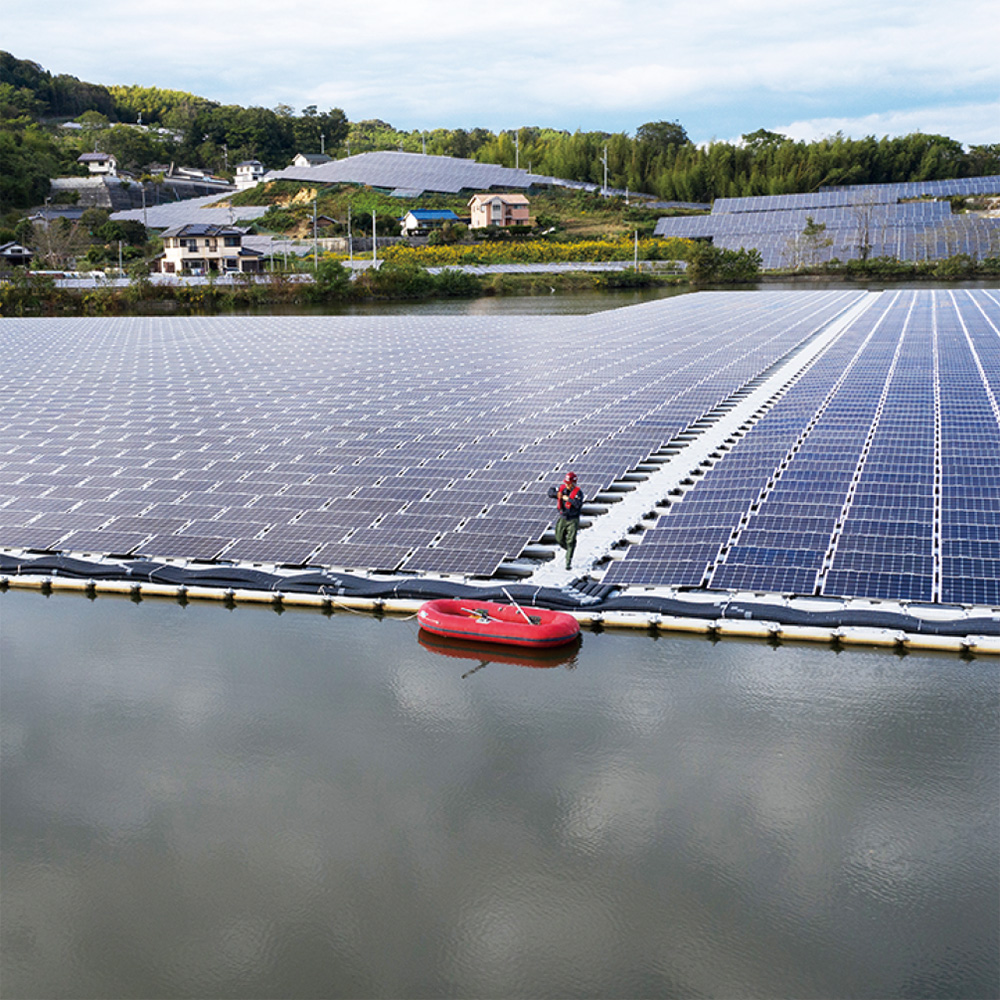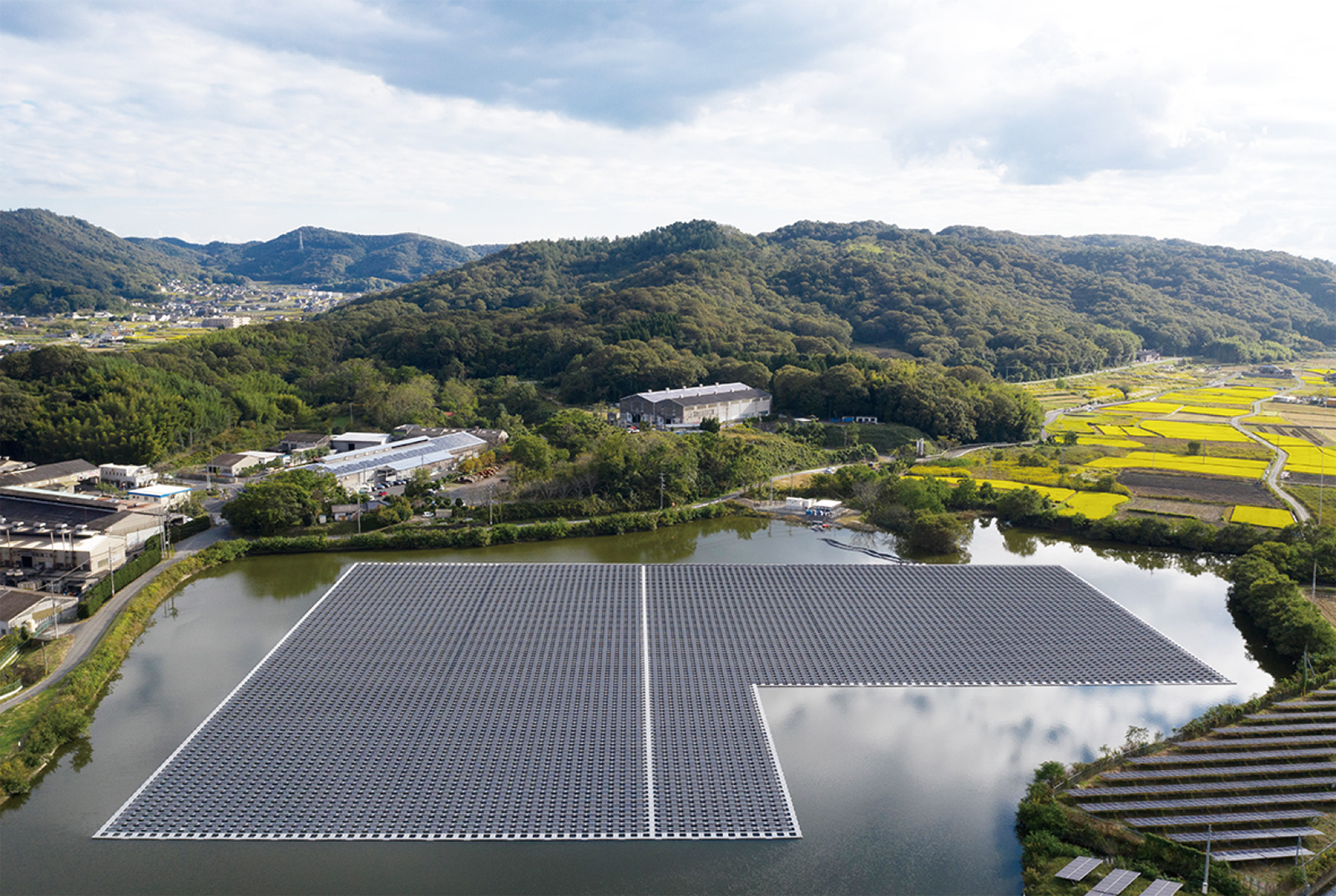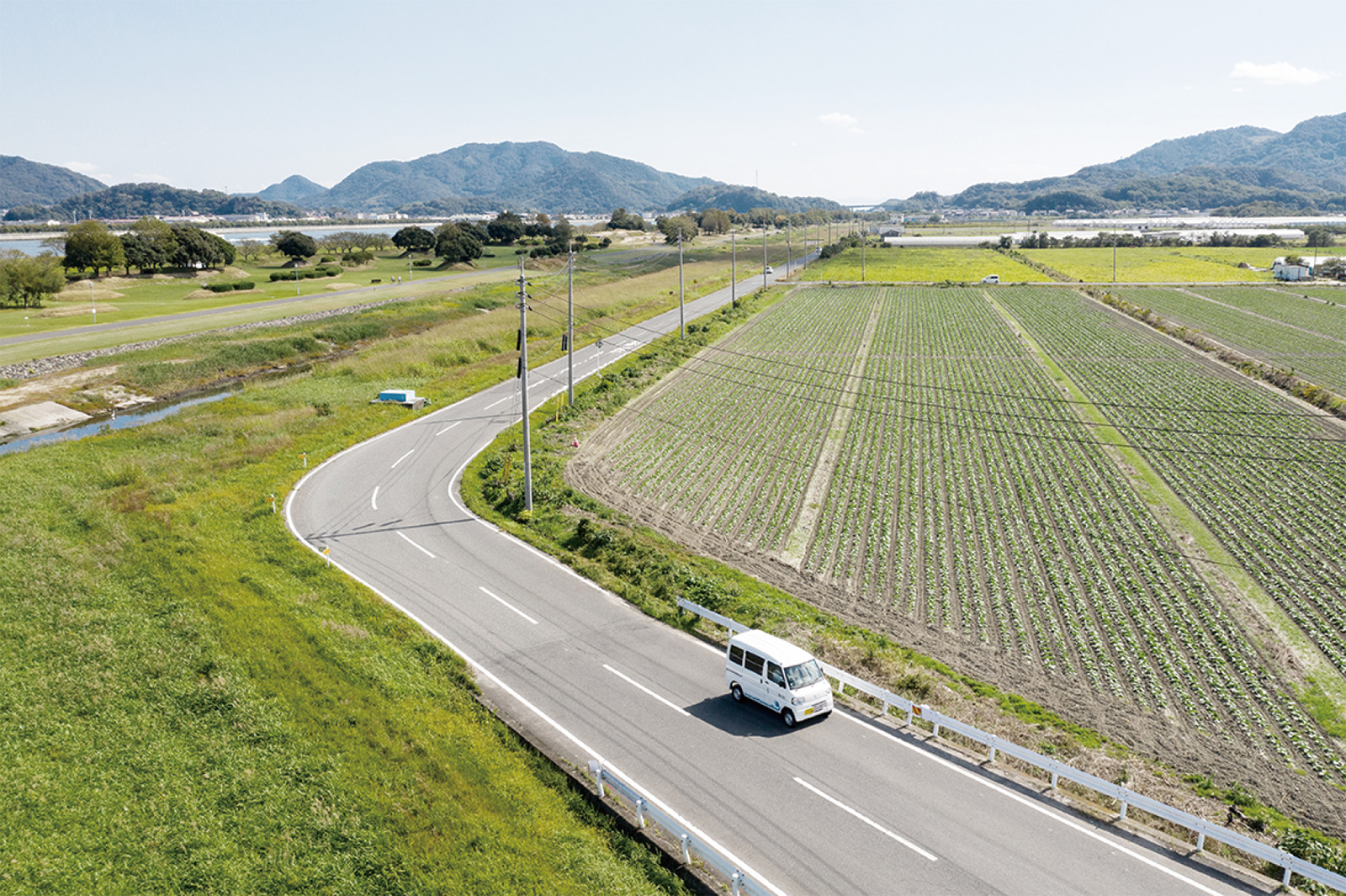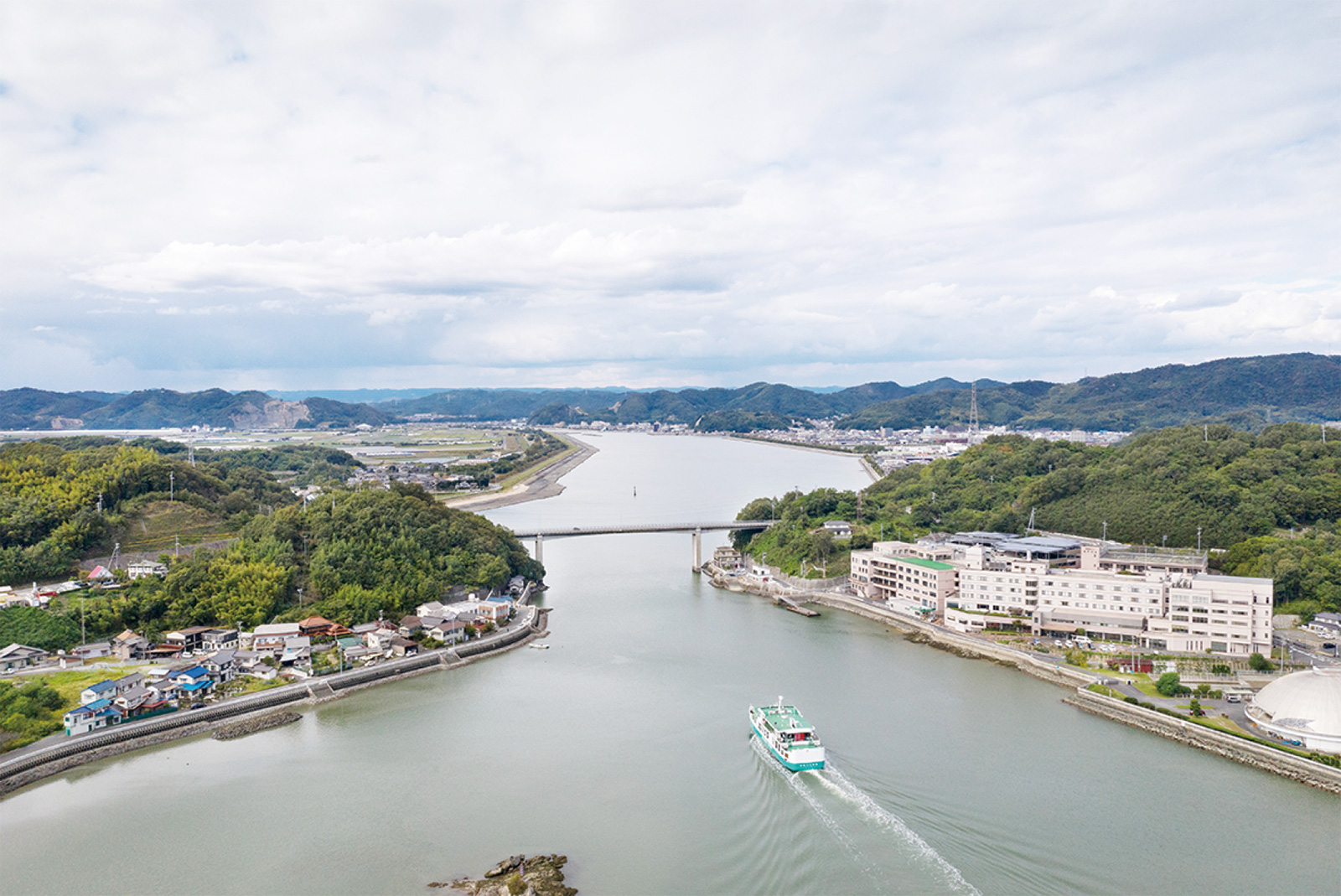
 Story
Story
The Floating Solar Plants of Kasaoka
Using Sustainable Energy to Revive and Strengthen a Local Community
Perched on the rugged edge of Japanʼs Inland Sea, Kasaoka (kah-sah-OH-kah) is a centuries-old farming and fishing community whose main attraction has been the horseshoe crabs that thrive in its shallow harbor.
Like many of Japanʼs small regional cities, Kasaoka has struggled to cope with changes brought by demographic aging, rural depopulation, and a decline of agriculture. A powerful typhoon in July demonstrated the cityʼs vulnerability to climate change, unleashing torrential rains that killed three residents and flooded hundreds of homes.
Ichigo is helping to revive and strengthen Kasaoka by supporting its move into a promising new industry: solar power generation. Ichigo has invested more than 900 million yen to build two solar plants that it currently operates in the city. Ichigo is about to begin construction of a third plant, and is in talks with the city about adding a fourth.
‟We wanted to improve our city while doing our part to reduce carbon use,” said Yoshifumi Kobayashi, Kasaokaʼs mayor. ‟We have to find a way to support ourselves economically and reduce our dependence on the central government. Ichigo has helped us gain more financial autonomy by making use of our idle land.”
Ichigo has built up a relationship with Kasaoka ever since the city first selected the company to construct and operate a solar plant on land that was originally reclaimed in the early 1990s for new housing that never got built. Instead, the site sat unused for decades, filling with overgrowth and pests that plagued nearby farmersʼ fields.
In March 2016, the Ichigo Kasaoka Takumicho ECO Power Plant went online, producing 1.12 megawatts of electricity ー enough to power 370 homes.
Ichigo is supporting Kasaokaʼs efforts to tap the potential of solar, which has been one of Japanʼs fastest growing energy sources. Japan is currently the worldʼs second-largest producer of solar power (after China), with an installed capacity of 42.8 gigawatts, according to a 2017 report by the International Energy Agency.
Ichigo won the contract in part by offering to build a plant that can also serve as an emergency power source during a natural disaster. Ichigo spent 10 million yen installing electrical outlets and a charging station that can be used during a blackout.
Ichigo also donated two electric vehicles to the city. These can be used in case a disaster cuts off gasoline supplies, as happened in northeastern Japan after the deadly 2011 earthquake and tsunami.
Ichigo proposed the second solar plant with an eye on solving another problem: what to do with hundreds of irrigation ponds, abandoned as farming diminished in the area, which have become a financial burden on the city. Ichigo offered to pay the maintenance for one of the larger ponds in exchange for the right to build a solar power plant that floats on top of the water, converting the surface of the pond into space for photovoltaic cells.
Completed in March 2018, the Ichigo Kasaoka Iwanoike ECO Power Plant is an array of 8,800 solar panels mounted on plastic floats that is capable of producing 2.64 megawatts of electricity for the city. To reach these panels, Ichigoʼs engineers must don rubber waders and paddle out in boats.
Ichigo expects to finish construction of a second, similar-sized floating power plant in Kasaoka in December 2019.
Kasaoka says solar power has given it a much-needed financial boost.
Ichigoʼs two operating plants provide the city more than 11 million yen in annual taxes, rents, and donations. Some of the money goes to subsidies for local residents to buy electric cars or install solar panels on their homes. The city is also setting aside part of the funds to finance future environmental projects.
‟When Ichigo contacted us, they had the best plan for contributing to the local community,” said Atsushi Arimoto, head of Kasaoka cityʼs Environmental Section. ‟We have become stronger against disasters, while also building up an environmental fund for the future.”
‟Ichigo always works for a win-win, to create and share success in a sustainable way with local communities,” said Eiichiro Gotoh, president of Ichigo ECO Energy, Ichigoʼs clean energy unit. ‟We work with communities and for communities. Thatʼs the Ichigo way.”

